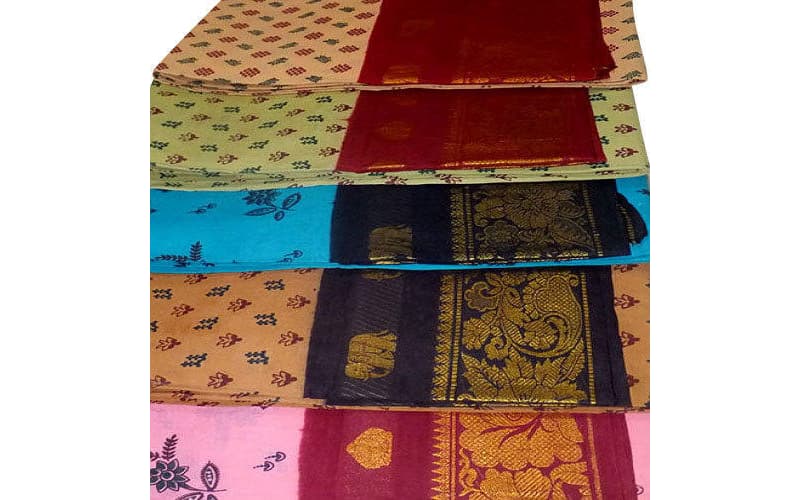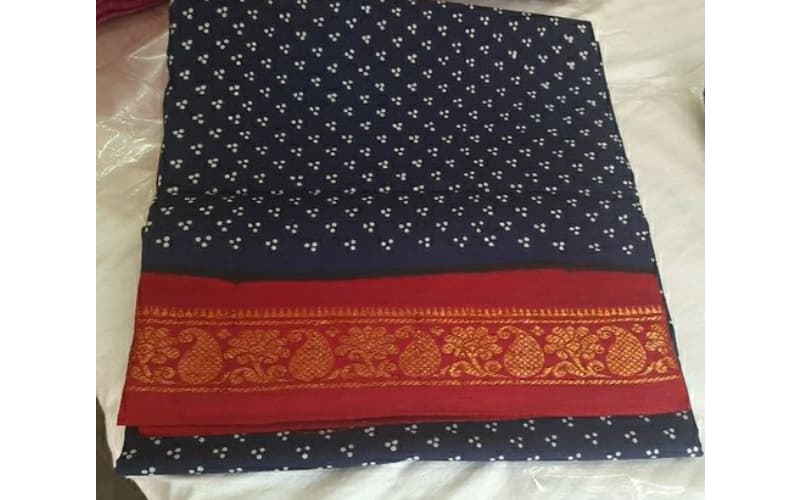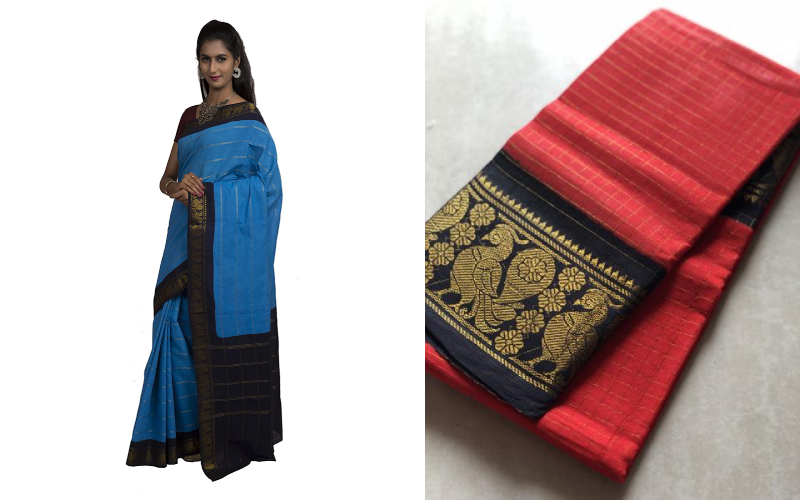
From the 8th to 11th century, The Saurashtrians from Saurashtra region (present day Gujarat) started migrating towards Southern India due to the frequent Muslim invasions. These merchants upon the invitation of Chola, Pandya, Vijayanagara, Nayak and Thanjavur Maratha Kings set up mercantile silk-weaving guilds throughout Southern India and were involved in the trade of silk clothes and diamonds to the royal families of ancient South India.
As the silk became the attire of royal families after the period of Gupta dynasty. Some of them settled down in Madurai, where the local king of the Nayak dynasty welcomed them. Here, they came to be known as "Patnūlkarars" (silk thread people). In order to please the local kings, the Saurashtrians of Madurai, who were expert craftsmen in fabric weaving and trade of silk garments, created a gift item of cotton fabric suited for use in the tropical conditions, and called it the "Madurai Sungdi."

In Saurashtra, the word 'sungudi' relates to the Sanskrit word "sunnam" meaning "round", representing the circular dots that are printed on the fabric as a prominent and special motif. While the dotted designs of the fabric are inspired by cosmic stars, its knotting pattern is a copy of the knots with which women tie their hair.
Making of Sungudis:
The saris woven are brought in for tie and dying. The design is marked on the sari by measuring and marking the design. The points are identified which are to be tied in the design. Artist holds the point with help of his fingernails and starts to wound the thread around that tightly enough to cover the cloth from getting dyed.

Tying process takes anyway around 8-10 days for a single sari. Once the tying is done, it is checked for any damages. The tied sari is taken for dying process, Dying is a little elaborate process and method followed is natural dying, where all dyes are obtained from herbs and plants. The tied sari is soaked in water for ten minutes so that when colour is added it spreads evenly to all places. It is followed by other processes like washing to remove stains, dying, heating, adding colour retaining agents, cooling with water, and drying.
Basically, using the technique of tie and dye, any piece of cloth can be dyed. Using the dyed cloth any products can be made out of it. Mainly Saris are made. Nowadays they have started making shirts. Sungudi sari price ranges from INR 1700 to INR 10000 with a standard size of 6 to 9 yards.
NEXT ARTICLE